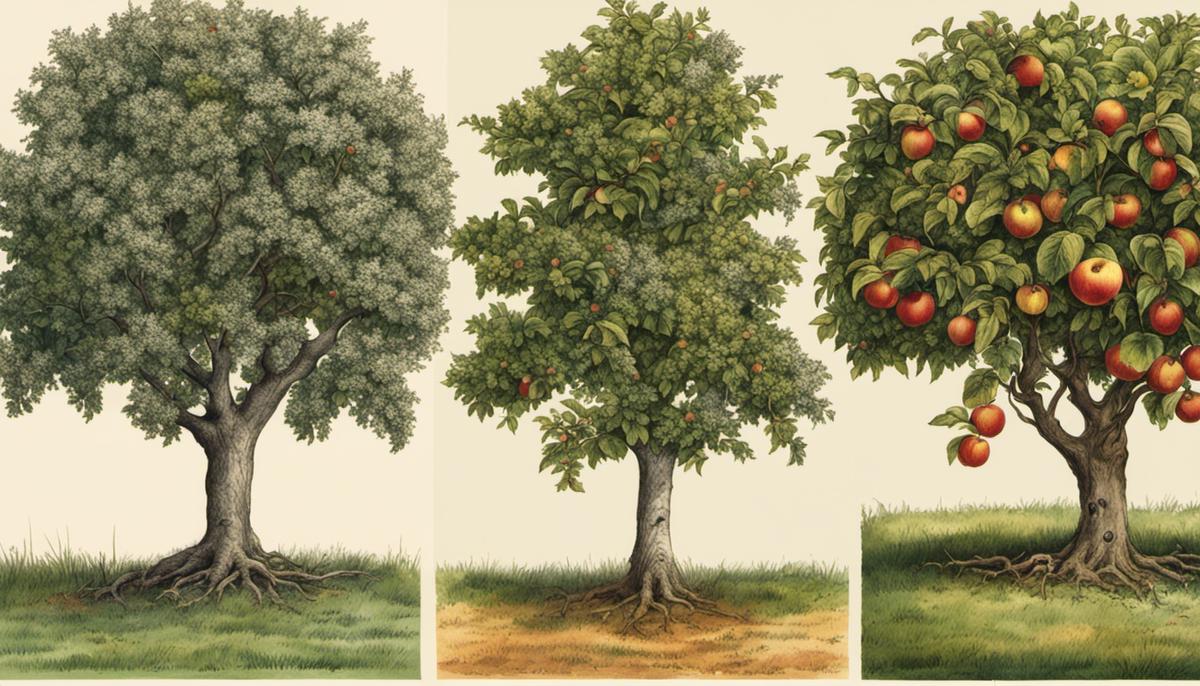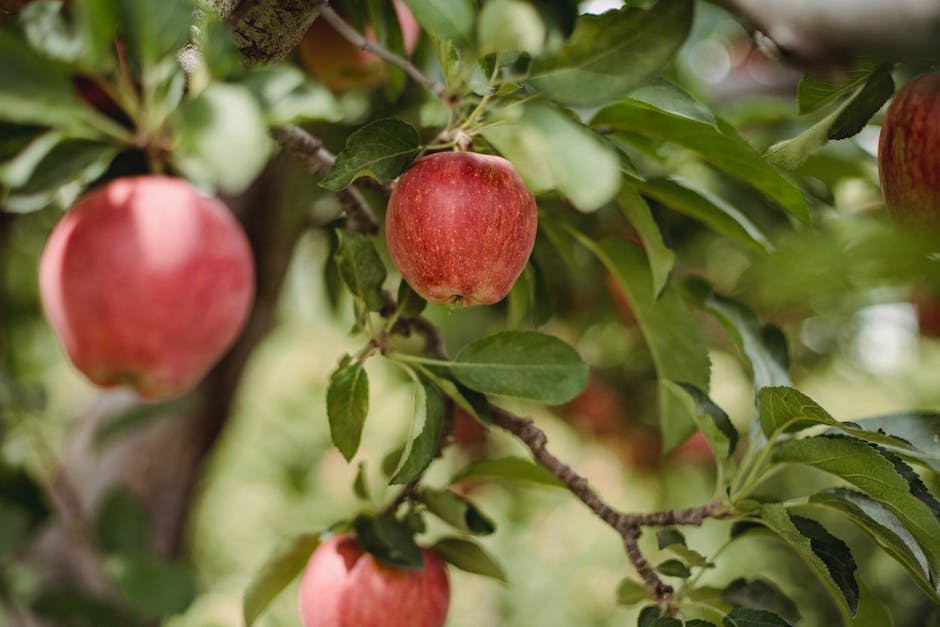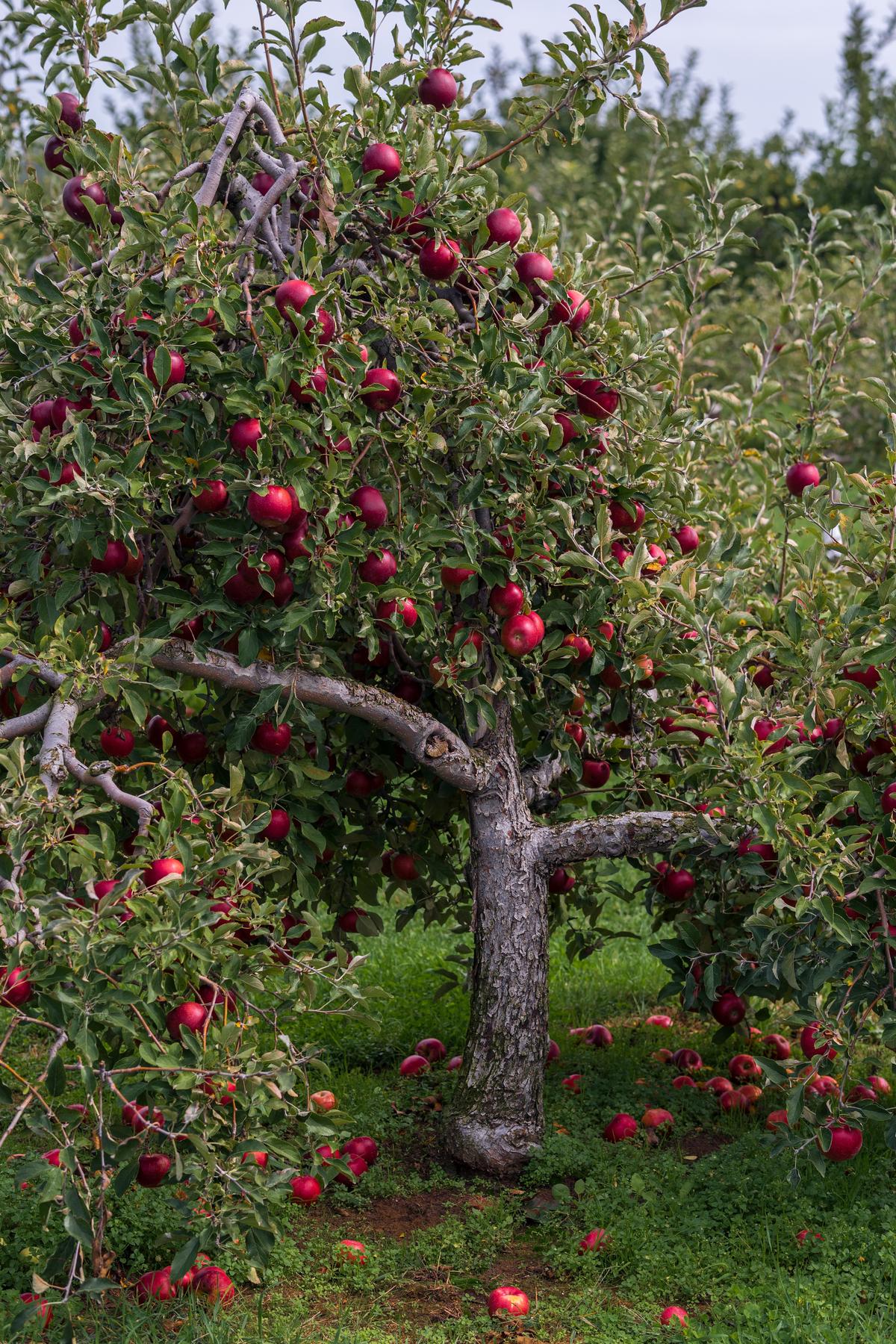Trimming Apple Trees: The Best Time And Tips

A thriving apple tree isn’t just a product of nature’s generosity, but is often the result of hard work, understanding, and the employment of proper tree care techniques. Our focus will shift towards learning and understanding the unique lifecycle of an apple tree, with an exploration of its growth and dormancy cycles. This understanding plays a significant role in fine-tuning the timing of your apple tree trimming endeavors, thus facilitating optimal health and an impressive fruit yield. Furthermore, we will delve into the details of the right trimming techniques and practices that will not only maintain the tree’s picturesque shape, but will also significantly contribute towards its growth and productivity. Finally, a discussion on the ideal seasons for trimming your apple tree will equip you with the knowledge to make informed decisions that will ultimately heighten the prosperity and vitality of your apple tree.
Understanding Apple Tree’s Growth Cycle
Unveiling the Wonders of the Apple Tree Growth Cycle
Every gardening enthusiast knows that getting acquainted with the life cycles of our favorite plant species is an exhilarating part of the hobby. Delving deep into the rhythms and patterns of nature, watching the annual transformation from minuscule seed to mature tree, is not only rewarding but educates us about the miracles hiding in everyday life. Today, let’s shine a spotlight on a quintessential epitome of fruiting trees – the Apple Tree.
Apple tree growth typically begins with the onset of spring, as the days elongate and temperatures rise. This is dependent on local climates, but in general, this special moment usually falls between late April and early May when Mother Nature casts off winter’s cloak.
Apple trees, just like us, love the warmth of spring! As dormancy diminishes with the receding cold, these trees get down to the business of growth. Warmer weather is their cue to begin unfurling their buds into leaves and blossoms. The myriad shades of pink, white, and red blooms look gorgeous; providing amateur photographers numerous opportunities for nature photography. These flowers don’t just add to the scenery – they play an essential role in the tree’s reproduction through pollination.
Post-flowering, an apple tree’s energy is focused on fruit development. This stage usually begins around a month after blossoming and may extend up to late summer. The tree will sport tiny, hard, green apples expecting their turn to ripen into juicy, red bundles of delight.
August through October is famoulsy dubbed “apple season”. This is when apple trees, now speckled with ripe and almost ripe fruits, are ready for a hearty harvest. Time to don that plaid shirt and haul out your basket!
But the apple tree’s job does not end with the fall harvest. A defensive and preparatory stage known as dormancy occupies nature’s chilly winter months. Trust us, there’s no laziness at work here, as the tree is preserving energy to be able to ride out the freezing temperatures. It’s during this quiet time that the tree renews and rejuvenates itself, ready to start the growth cycle again with the coming spring.
It can definitely be said, the life cycle of the apple tree is a hardworking journey; inspiring novice enthusiasts and seasoned gardeners alike. It’s consistent growth pattern tells a tale of resilience and the wonders of nature, making it that more exciting to cultivate and care for in your own backyard.
Happy gardening, and enjoy growing these incredible testaments to nature’s resilience!

Proper Trimming Techniques
The Art of Pruning and Caring for Your Apple Trees: A Comprehensive Guide
Pruning an apple tree is part artwork, part science, and completely vital for promoting the tree’s health and productivity. A well-pruned tree not only beautifies your garden but also ensures a bountiful crop of apples.
The objective of pruning is to shape the tree such that it gets maximum sunlight and air circulation. One usually wants a pyramid-like structure. High-quality pruning can also maintain the desired size and shape, enhancing yard aesthetics.
The ideal time for apple tree pruning is late winter or early spring, just before new growth starts yet when the tree is still dormant. Avoid pruning in the fall since it may stimulate new growth just as the tree needs to go dormant again.
When pruning, make the cuts at a 45-degree angle and about 1/4 inch above a bud, ensuring the angle is away from the bud. This direction encourages water to run off and reduces the risk of disease and rot.
Dead, diseased, and damaged branches are the first to go. Simply clip them off at the base. Also, remove any vertically growing water sprouts or suckers growing at the tree base.
Removing limbs that cross or rub against each other is crucial. Friction can lead to open wounds, which may later serve as entry points for pathogens.
When it comes to apple trees, less is more. Never prune more than a third of the tree in one go. It’s much better to under-prune than over-prune since over-pruning can stress the tree out.
Beyond pruning, apple trees also need good soil, plenty of sun, and regular watering. To strengthen the roots and improve soil structure, work compost into the soil at least once a year.
Apple trees prefer slightly acidic soil, with pH between 6.0 and 7.0. Monitor your soil pH and adjust it with garden lime or sulfur as necessary.
Keep a watchful eye for pests and diseases. Common apple tree pests include aphids, apple maggot, and codling moth. Diseases like apple scab and cedar apple rust can decimate your apple crop. Regular pruning and well-timed application of organic pest and disease control measures are indispensable.
When you weave in this love for care and patience, the rewards go beyond just a basket full of juicy apples. You experience a deeper connection with nature and an enormous sense of achievement. These lessons from apple tree caring can enrich many other aspects of your life, making a hobbyist identify with the ebb and flow of nature’s rhythm.
In short, apple tree care is a magnificent hobby that not only yields fruits but enriches the horticulturist in you. So, put on those garden gloves, grab your pruner, and step into the intriguing world of apple tree maintenance. The joy and lessons in this journey are unprecedented.

Best Seasons to Trim Your Apple Tree
Now that we’ve explored the growth cycle of the apple tree and delved into aspects of care such as pruning, soil quality, and pest management, let’s shift our focus onto the perfect seasons for trimming this beautiful fruit bearer.
While it seems like a daunting task, especially for those new to the gardening arena, knowing when to trim your apple tree can significantly impact its growth, overall health, and fruit production. It’s an essential aspect of apple tree care that can’t be overlooked—a sort of gardening gold, if you will!
So, when are the best times to brandish your pruning shears? Winter and summer, but for different reasons.
Winter, more specifically late winter, is often chosen as the prime trimming season. This period of dormancy is when the tree’s energy is reserved within its roots, leaving it more resilient to the stress of pruning. A dormant apple tree is also devoid of obscuring foliage, granting a clear view of the tree structure. This benefit allows for a detail-oriented approach to pruning, to shape the tree, increase sunlight penetration, and improve air circulation throughout. It’s worth noting, though, that to avoid endangering the tree to extreme winter cold, pruning should be done after the coldest part of the season has passed.
Summer, on the other hand, is best for ‘corrective trimming.’ Unlike winter, summer pruning suppresses growth, perfect for when the aim is to slow down a particularly vigorous apple tree. This corrective trim is best done after harvest, usually around late August to early September. This timing guarantees you’re not removing any potential fruit buds for the following year.
In both cases, the goal is not only to enhance the tree’s aesthetic but more importantly to remove dead, diseased, or damaged branches—those unsightly and unhealthy suckers and water sprouts, and any crossing or rubbing branches that may cause wounds to the tree.
It’s a tricky business, finding the balance between pruning too much and too little. Over-pruning can stress the tree and reduce apple production, while minimal pruning can result in an overgrown tree with poor fruit quality. But once you get the hang of it, it becomes part of regular tree maintenance that will reward your apples richly.
This fascinating and rewarding process that goes into apple tree care offers more than just a basket of crisp apples—it’s the satisfaction of witnessing the cycles of life, understanding nature’s language, and ultimately, growing together with your apple tree. Once you’ve mastered the ins and outs of caring for an apple tree, you’ll find yourself raring for a new gardening challenge! Don’t be surprised if you become as hooked on this rewarding hobby as most of us here are—gardening truly grows on you!
In closing, understanding and caring for your apple tree’s root to branch, bloom to harvest, is a testament to your dedication to the art and science of gardening. Every flourish of an apple leaves, every crisp bite into a fresh apple—it’s all a sum of seasons well spent. Enjoy every pruning, every harvest, and every day spent with your apple trees, fellow gardeners. Happy apple tree tending to you all!

To maximize the vitality and productivity of your apple tree, a measured balance between knowledge and practice is imperative. An in-depth understanding of the apple tree’s growth cycle will help you to identify the optimal trimming times in every season, facilitating a healthier tree and a more abundant fruit production. The implementation of correct trimming techniques plays an equally paramount role in maintaining the health and aesthetic allure of the tree. Coupling these trimming techniques with the information on the prefered seasons for tree trimming leaves you better equipped to care for your apple tree, ensuring it continually stays in its finest shape while offering you the best of its bounty.



